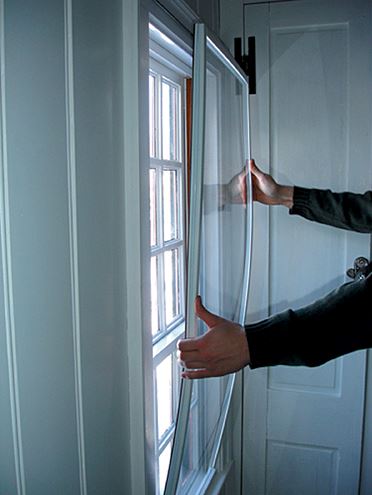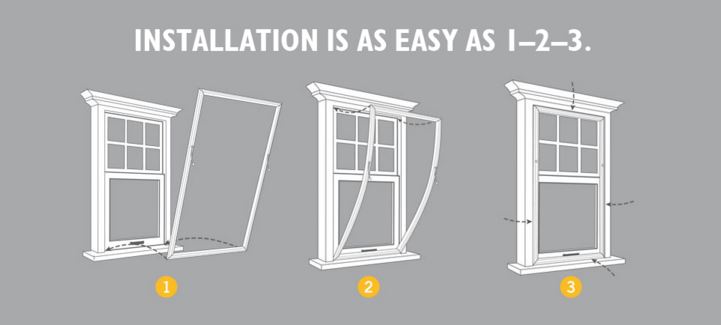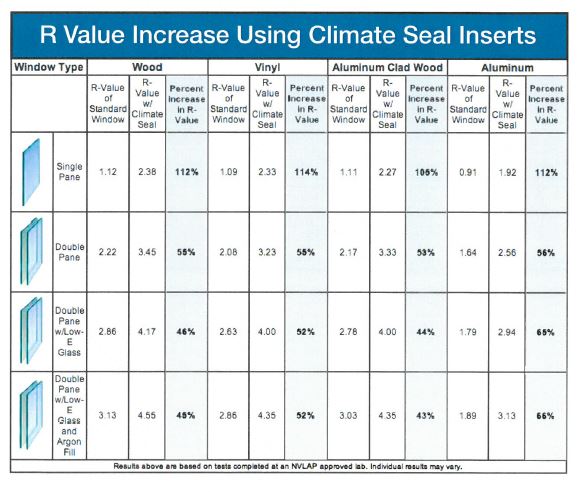Window inserts are interior insulating window systems that take the benefits of an existing window and improve it without compromising the look of the opening. The additional window creates a significant thermal break as well as 2-1/2 to 3 inches of meaningful dead air space that is much greater than the standard ¾” of dead air offered by new insulating glass panels. Interior insulating windows can eliminate 75-90% of energy robbing air infiltration and reduce heat loss due to conduction by 40-50%. They can also reduce noise infiltration by well over 50%.
According to the ‘Partnership for Advanced Technology in Housing,’ a test on one brand of interior storm window performed on three Florida residences reported reduced heating and cooling energy use by 29% and noticeably reduced interior window condensation. They can function in-place year-round or they can be removed from windows for fresh air during milder weather.

If you are a homeowner that likes the look of your existing windows and you don’t want to incur the added expense of replacing them, which could be a considerable cost, then window inserts may be the solution. You may currently have old wood double hung or steel casement windows that just don’t perform as newer windows with clad frames and insulated glass. Old double hung windows are very hard to seal; the spaces where the counterweights go are big empty wind tunnels. Air leakage becomes a far greater problem with the weight tunnels than heat loss through the glass. A single pane window has an R value of perhaps 1; a new double glazed insulated glass window between 2 and 4 unless you get very expensive units. The R value is a measure of thermal resistance; the higher the R value the better the building’s insulation effectiveness. So single pane glass windows are about as low an R value as one can get.

Whether it is air infiltration, drafts, noise, cold, heat, damaging UV rays, dust and/or pollen that is your problem, window inserts can be the solution at a fraction of the cost of window replacement. Window inserts can also reduce your HVAC (heating/cooling) bills as much as one third.
Better yet, because they are installed on the interior of the window they don’t take away from the aesthetic quality that your windows might have such as what storm windows do by often blocking the look, appeal and detail of windows in historical houses and buildings. Charles W. Nelson, Historical Architect for the Minnesota State Historic Preservation Office stated, “….the challenges that climate poses on energy conservation and creature comfort are even more apparent in historic buildings where the need to respond often results in compromising or jeopardizing historical design qualities. The ideal sought after solution must combine energy savings, noise and moisture reduction and reduced air and particulate infiltration with minimal or no impact on the architecture itself.”

Window inserts are generally constructed using a vinyl or aluminum frame. One manufacturer, Climate Seal offers a multitude of frame color choices painting their frames with a commercial grade of Sherwin Williams paint capable of adhering to wood, steel and vinyl. The glazing is generally made of one layer of double polished clear 8, 10 or 20 mil PVC vinyl (the larger the insert the thicker the vinyl).
A second manufacturer, Energy Savr interior window insert frames have a ½” polyether foam weather-strip gasket around the perimeter of the panels and or on all surfaces which contact the primary window frame if the unit is surface mounted. This gasket applies pressure to the window jamb which it is installed in and helps hold the window insert in place. The inserts are easy to install and remove. If there is a large amount of air intrusion at any window some additional hardware such as shelf pins can be installed to hold the insert in place.

In summary, the interior storm window solution using clear vinyl glazed window inserts not only provides the homeowner with initial cost savings in installation, but it also reduces fuel consumption, meets all functional requirements and carefully addresses some historic preservation concerns.
